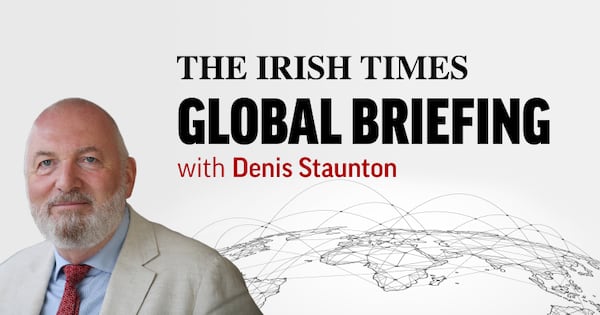The US Senate took the first step to end the longest shutdown in history on Sunday night, after a group of Democratic lawmakers crossed party lines and endorsed a compromise plan to reopen the government.
Eight Democrats voted along with all but one Republican senator to advance a deal, which was negotiated behind closed doors by rank-and-file Democrats, Republican senators and the White House. The final vote was 60-40 in favour of advancing the agreement.
A deal would reopen the federal government and keep it funded until the end of January. It would also reverse the lay-offs initiated by the White House during the shutdown and guarantee that furloughed workers receive back pay, while including a concession by Democrats on healthcare tax credits that have been a key sticking point in the funding stand-off.
After Sunday’s procedural vote, the deal will now need to be debated and passed by the Senate and signed off by the Republican-controlled House of Representatives before the shutdown can end.
READ MORE

But US president Donald Trump appeared confident late on Sunday, the 40th day of the shutdown. “It looks like we are getting close to the shutdown ending,” he told reporters. “You’ll know very soon.”
The Senate vote was a breakthrough in a shutdown that has dragged on for nearly six weeks, rattling the federal workforce, bringing many public services to a halt and jeopardising welfare benefits for tens of millions of Americans.
Tim Kaine, Democratic senator for Virginia and one of the eight to side with Republicans, said a possible deal would “protect federal workers from baseless firings, reinstate those who have been wrongfully terminated during the shutdown, and ensure federal workers receive back pay”.
However, the vote exposed deep divisions among Democrats as many lawmakers accused fellow party members of caving in to Republican demands.
Chuck Schumer, the Democratic minority leader in the Senate, voted against the deal, while Hakeem Jeffries, his counterpart in the House, said he would also oppose it.
The agreement included a concession by Democrats on healthcare tax credits, which are due to expire at the end of the year and which the Democratic Party has insisted should be extended. Mr Trump on Saturday poured cold water on the idea of an extension.
The deal struck on Sunday gives no guarantees on the future of the tax credits but only offers an assurance that a vote will be held on the issue no later than mid-December.
“We will fight the GOP bill in the House of Representatives,” Mr Jeffries said. “As a result of the Republican refusal to address the healthcare crisis that they have created, tens of millions of everyday Americans are going to see their costs skyrocket.”
Sunday’s vote came after top Trump administration officials warned that US air travel would slow to a “trickle” and economic growth could turn negative if the stalemate continued for much longer.
US Treasury secretary Scott Bessent said the economic impact of the shutdown would only get “worse and worse”.
US futures tracking the S&P 500 and Nasdaq 100 rose 0.7 per cent and 1.2 per cent respectively on Monday.
Yields on 10-year US treasuries rose 0.04 percentage points to 4.14 per cent. Bond yields move inversely to prices.
The government shut down on October 1st, after Republican and Democratic lawmakers failed to agree on a plan to fund the government for the new federal fiscal year.
Funds for the Supplemental Nutrition Assistance Program, or Snap, lapsed on November 1st for the first time in more than 60 years, affecting 40 million-plus poorer Americans who rely on the benefits.
On Friday the Federal Aviation Administration, which regulates air travel in the US, ordered airlines to begin reducing flight numbers. More than 2,700 flights were cancelled in the US on Sunday, according to tracking website FlightAware, while more than 10,000 others were delayed.
Richard Yetsenga, chief economist and head of research at ANZ, said the shutdown had contributed to falling bond yields and a correction in gold prices. “If the shutdown’s over I would expect a reversion of some of those shifts.”
– Copyright The Financial Times Limited 2025













